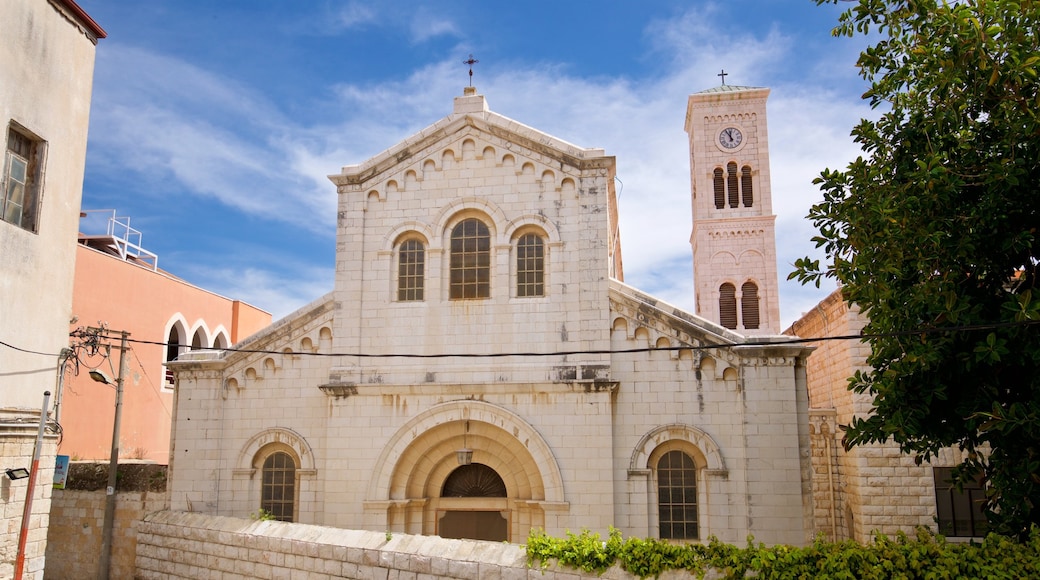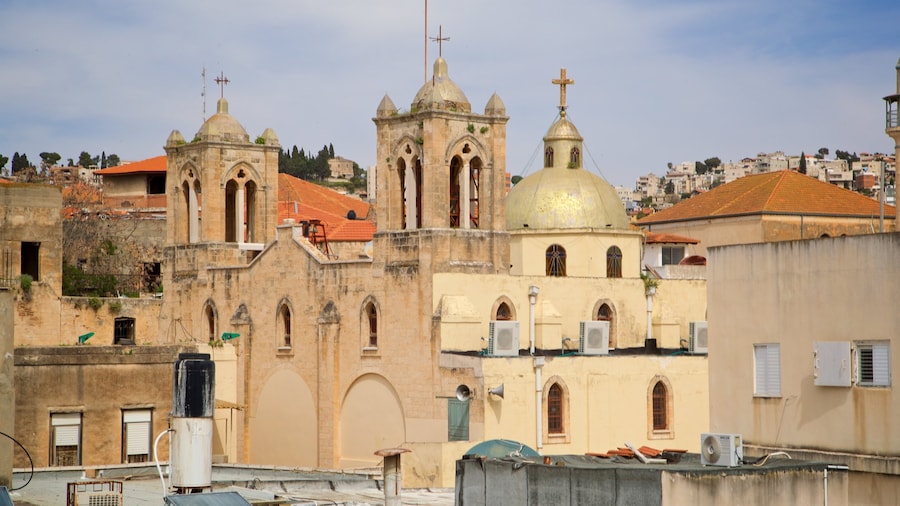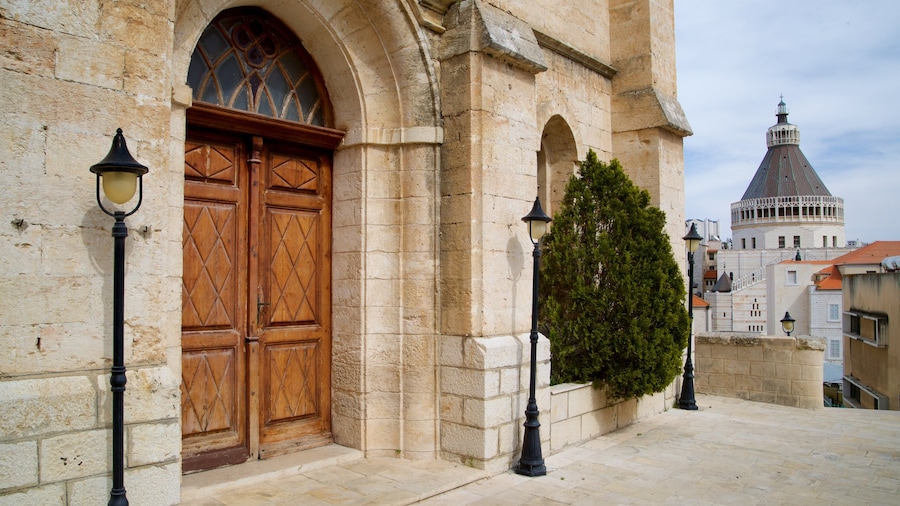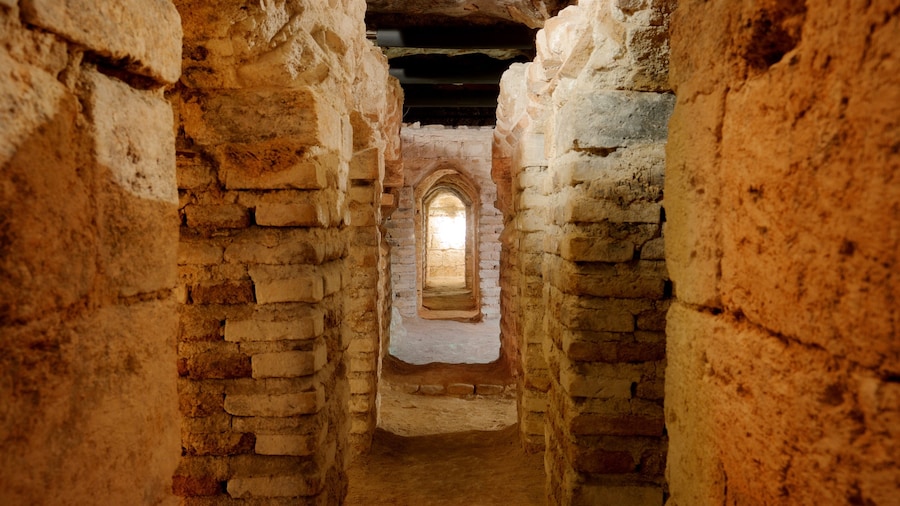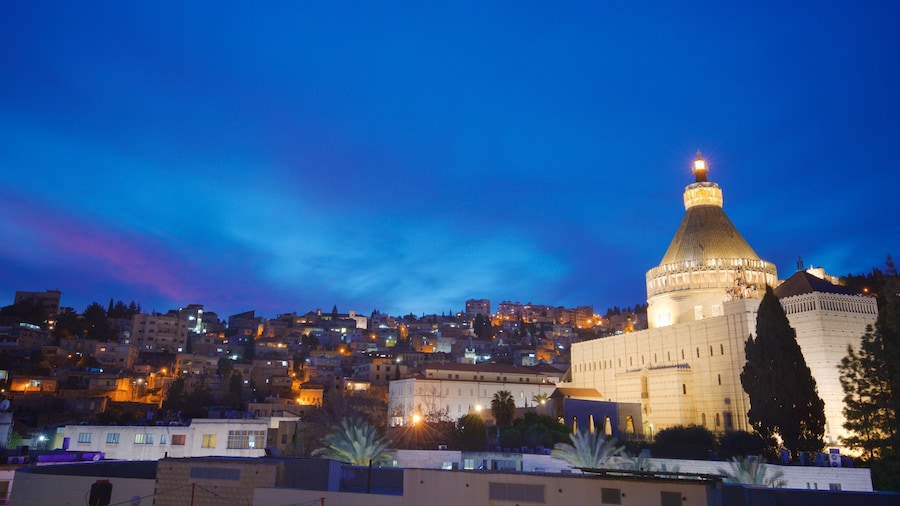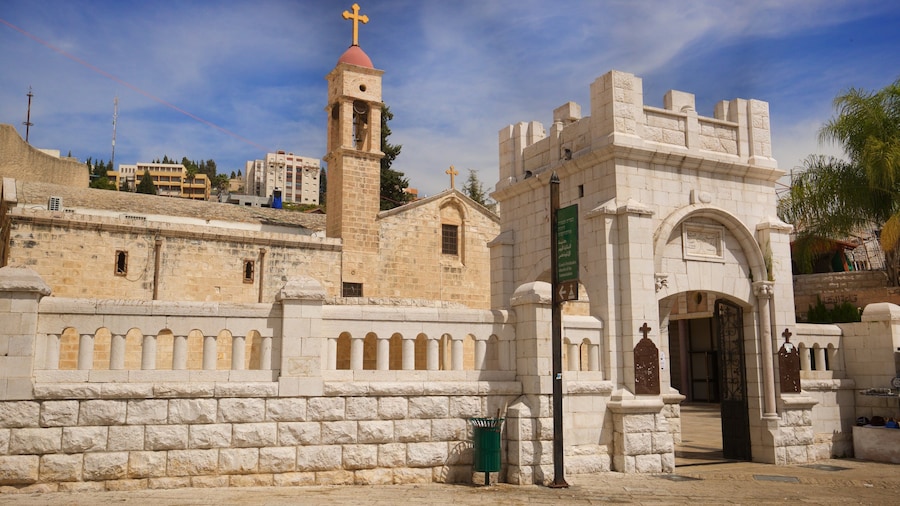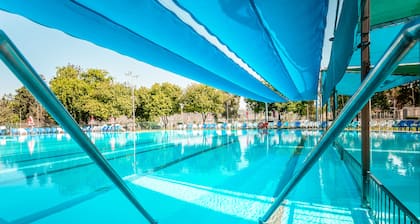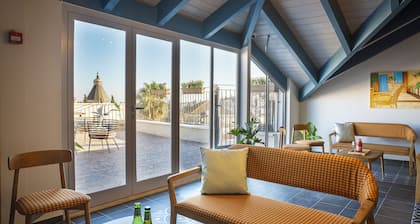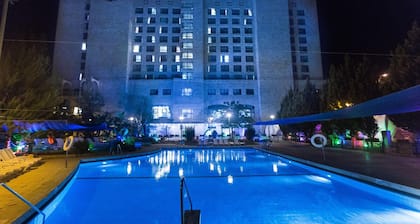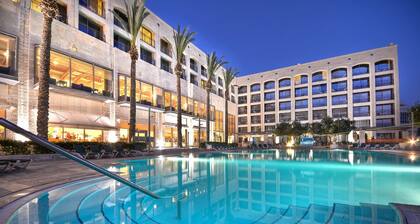Experience the mystical aura that surrounds St. Joseph’s Church. Discover a series of paintings and statues dedicated to the Holy Family and see the supposed ruins of Joseph’s workshop. St. Joseph’s Church, also known as the Church of the Nutrition, dates back to 1914. It stands on a site once occupied by Byzantine and Crusader churches.
This century-old Franciscan church has a simple brick neo-Romanesque design. An arched doorway and arched windows decorate the façade. To the right of the main entrance is a plaque with a brief history of the church in English. Statues of an infant Jesus, the Virgin Mary and Joseph stand in a niche adjacent to the side entrance.
Rows of pillars with decorative capitals and crowned by arches flank the nave. Above the arches is a collection of stained-glass windows, each depicting scenes from the bible, such as the death of Joseph. Paintings portraying the Holy Family and the Stations of the Cross hang on the walls. See additional paintings of Jesus, Mary and Joseph in the apses around the altar.
A staircase leads to the church’s crypt, home to the archaeological relics of the former Byzantine and Crusader churches. Spot well-preserved mosaics and frescoes. Peer into caves, one of which is the believed, although unconfirmed, site of Joseph’s carpentry studio. There’s also evidence of grain pits and water cisterns common in Nazareth during the 1st century.
The church is located in Nazareth’s Old City and to the north of the Basilica of the Annunciation. Nazareth Central Station is less than a 10-minute walk away. The Ancient Bath House of Nazareth, Christ Church and Nazareth Market are among several attractions near St. Joseph’s Church. A signpost outside the main entrance points in the direction of major landmarks.
St. Joseph’s Church is open to visitors daily and admission is free of charge. Speak softly when visiting, especially during Mass services.

